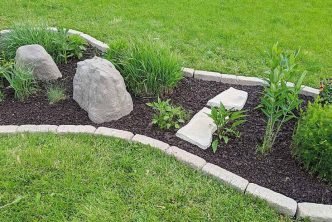Are you looking to boost your home’s landscaping? That’s not a bad idea, since aside from making the exterior of your home look more beautiful, the right landscaping can increase the value of your home by 10-12%.
Regardless of the projects you’re envisioning, they all start with a solid foundation. In the world of landscaping, that comes from having a lush and beautiful lawn.
To ensure that you have a lawn that’s the envy of your neighbors, we’ve put together this guide on lawn care for beginners. By the time you finish reading it, you should know exactly how to take care of even the most unruly turf.
Keep reading to learn all about how to take care of your lawn.
Table of Contents
Water Your Lawn Often
It should go without saying, but plants need water to grow and thrive. Your lawn is no different, so ensure that it has the water it needs at all times.
Unfortunately, keeping your lawn quenched and saturated isn’t as simple as you might think. If you’re not careful, you can end up bogging it down with excessive amounts of water. This can be especially problematic if your grass is dry.
If it doesn’t rain, stick to watering your lawn once or twice a week. Try to water in a way that allows water to flow down into the roots of your grass. Otherwise, the water will get caught on the surface and might even damage your lawn.
To encourage the water to flow down into the earth, water in the early morning. If you water in the hot afternoon, the water might evaporate before it reaches the roots. Watering at night might cause excess amounts of water to pool.
Consider setting up a lawn irrigation system if you don’t have much time to take care of your lawn. You can install an irrigation system controller like the Hunter PRO-C Conventional (PCC) to schedule the watering time and adjust the watering duration and frequency. This way, your lawn can stay hydrated even if you don’t have time to water it or go out of town.

Give It Room to Breathe
Have you ever aerated your lawn? If you haven’t, you’re missing out on one of the easiest ways to encourage the growth of healthy and lush grass.
Just like a bottle of wine, aerating your lawn involves introducing oxygen into it. As is the case when you water, you want the oxygen to get deep down into the depths of the grass. To do that, you dig a few small holes in your lawn.
You don’t want to aerate too often as you do have to pull out the roots of your grass to do it. Once or twice a year should be more than enough to give your lawn what it needs.
You also want to do it at the right time of year, when the soil is damp but not soaking wet. In most cases, this will mean doing it in spring or fall.
Aeration is one tip that all of the lawn care companies and experts recommend, so make sure to do it!
Seed in the Dry Patches
After you finish aerating, it’s not a bad idea to fill in those spots and other dry patches with grass seed. These spots function as excellent areas for germination, allowing verdant, bright green grass to grow strong.
Don’t just choose any type of grass seed, however. You want to choose a seed that works well for your climate, region, and plot of land. You also want it to mix well with the grass that’s already on your lawn.
Do some research to figure out which types of grasses grow best in your area. Choosing one that your climate can help support will ensure that you end up with a healthy, lush, and cohesive-looking lawn.
Mow the Right Way
Mowing might seem like a simple enough task. After all, you’re just running a blade over and over your lawn.
But as any Midwestern dad can tell you, there’s a lot more that goes into mowing a lawn that meets the eye.
For one thing, you only want to mow with an electric lawn mower that has sharp blades. This gives your grass a fresh and even cut. If you try and mow it with a dull blade, you’ll end up with a snaggly, unhealthy-looking yard.
One thing many people are guilty of doing is over mowing. Despite what many people believe, you shouldn’t be mowing your lawn more than once every five to seven days. This encourages the growth of your grass and keeps you from cutting it too short.
Make Sure to Fertilize
You can water your lawn until your hands bleed, but if it doesn’t have the nutrients it needs to grow, you’re not going to get the results that you want. Ensure that your grass has nothing holding it back by fertilizing it.
Instead of guessing what your grass needs, visit your local landscaping store and check the pH. If you find that it’s too acidic, lime treatments can help get it down. If it’s too basic, use acidic treatments to get the balance it needs.
Like all of the other lawn maintenance tips on this list, you don’t want to fertilize too often. Once or twice a year should be plenty. Cool-climate grasses need fertilizer in the summer, while warm-climate grasses need it in the off-seasons.
If you’re trying to be more eco-friendly (which we should all be doing!), you can also look into composting. This is another great way to give your grass what it needs while also practicing sustainable living.
Lawn Care for Beginners Made Easy
Whether you have a massive, multi-acre expanse of grass or a small plot of land, lawn maintenance should be one of your housekeeping priorities either way.
Use this lawn care for beginners guide to help you get started. By following the tips mentioned, you’ll have a lush and verdant lawn in no time.
Are you looking for more lawn maintenance guides and tips? If so, make sure to check out the rest of our site.





